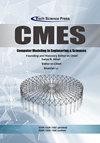基于表面肌电信号的手势识别的SE-CNN注意力结构
IF 2.5
4区 工程技术
Q2 ENGINEERING, MULTIDISCIPLINARY
Cmes-computer Modeling in Engineering & Sciences
Pub Date : 2023-01-01
DOI:10.32604/cmes.2022.020035
引用次数: 1
摘要
为了降低现有手势识别系统的复杂性并提高其泛化能力,本文提出了一种新的SE-CNN注意架构,用于基于表面肌电信号的手势识别。该算法在一个简单的CNN架构中引入一个时间压缩和激发块,然后利用它来重新校准卷积层特征输出的权重。通过增强重要特征,抑制无用特征,有效地实现了手势识别。该算法的最后一个步骤是利用一个简单的注意机制来增强学习到的表面肌电信号的表示,以执行多通道基于表面肌电信号的手势识别任务。为了评估该算法的有效性和准确性,我们使用多手势数据集Ninapro DB4和Ninapro DB5进行了会话间验证和主体交叉验证的实验。经过与以往模型的一系列比较,该算法有效地增强了鲁棒性,提高了手势识别性能和泛化能力。本文章由计算机程序翻译,如有差异,请以英文原文为准。
A Novel SE-CNN Attention Architecture for sEMG-Based Hand Gesture Recognition
In this article, to reduce the complexity and improve the generalization ability of current gesture recognition systems, we propose a novel SE-CNN attention architecture for sEMG-based hand gesture recognition. The proposed algorithm introduces a temporal squeeze-and-excite block into a simple CNN architecture and then utilizes it to recalibrate the weights of the feature outputs from the convolutional layer. By enhancing important features while suppressing useless ones, the model realizes gesture recognition efficiently. The last procedure of the proposed algorithm is utilizing a simple attention mechanism to enhance the learned representations of sEMG signals to perform multi-channel sEMG-based gesture recognition tasks. To evaluate the effectiveness and accuracy of the proposed algorithm, we conduct experiments involving multi-gesture datasets Ninapro DB4 and Ninapro DB5 for both inter-session validation and subject-wise cross-validation. After a series of comparisons with the previous models, the proposed algorithm effectively increases the robustness with improved gesture recognition performance and generalization ability.
求助全文
通过发布文献求助,成功后即可免费获取论文全文。
去求助
来源期刊

Cmes-computer Modeling in Engineering & Sciences
ENGINEERING, MULTIDISCIPLINARY-MATHEMATICS, INTERDISCIPLINARY APPLICATIONS
CiteScore
3.80
自引率
16.70%
发文量
298
审稿时长
7.8 months
期刊介绍:
This journal publishes original research papers of reasonable permanent value, in the areas of computational mechanics, computational physics, computational chemistry, and computational biology, pertinent to solids, fluids, gases, biomaterials, and other continua. Various length scales (quantum, nano, micro, meso, and macro), and various time scales ( picoseconds to hours) are of interest. Papers which deal with multi-physics problems, as well as those which deal with the interfaces of mechanics, chemistry, and biology, are particularly encouraged. New computational approaches, and more efficient algorithms, which eventually make near-real-time computations possible, are welcome. Original papers dealing with new methods such as meshless methods, and mesh-reduction methods are sought.
 求助内容:
求助内容: 应助结果提醒方式:
应助结果提醒方式:


